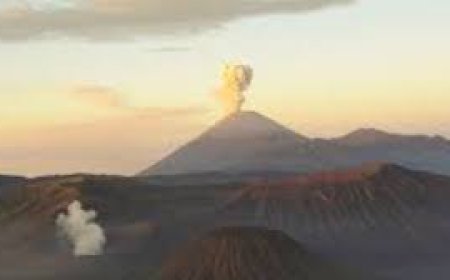Scientists on the verge of discovering new elements!
Scientists claim that they have recently reached the threshold of discovering the 119th and 120th new elements. A group of scientists from the Lawrence Berkeley National Laboratory in the United States are involved in the research of discovering these new elements. And their research was published in the Physical Review Letters journal on October 21, 2024.

Scientists actually hit the plutonium-244 isotope with a charged titanium atom. This creates one of the heavier elements in the periodic table, 'livermorium'. Its atomic number is 116. And in this, they expect to discover or find the existence of two new elements. Which may appear as the 119th and 120th elements in the periodic table of chemistry in the near future.
The list or table prepared by arranging the elements in horizontal rows and vertical columns to show the similarities, differences and changes in the order of these elements in the physical and chemical properties of various elements naturally occurring or artificially produced on earth is basically called the periodic table. Moreover, scientists have listed the names of a total of 118 elements in the periodic table so far.
Out of these 118 elements, 98 elements are found naturally and the remaining 20 elements have been created by scientists in the laboratory. However, according to information provided by some websites, 92 natural elements and 26 artificial elements have been shown. However, it is true that although artificial elements created by humans in laboratories are mentioned, in reality their existence may have existed somewhere else in this vast universe long ago.
However, among the 92 or 98 naturally occurring elements, the oxygen element is found in the largest amount on the surface of the earth and deep within it. Again, there is a considerable difference and variation between the amount of elements found in the atmosphere and the amount of elements found on the surface. According to the research of scientists, nitrogen is the most abundant element in the earth's atmosphere.
According to scientists, the elements present on the surface of the earth include oxygen 46.1%, silicon 28.2%, aluminum 8.23%, iron 5.63%, calcium 4.15%, sodium 2.36%, magnesium 2.33%, potassium 2.09%, titanium 0.565% and 0.14% hydrogen. In addition, the remaining other elements/elements may be approximately 0.21%.
On the other hand, nitrogen gas is stored as the largest amount of element in the atmosphere (in dry state). In particular, the total elements in the atmosphere are about 78.084% nitrogen and 20.946% oxygen. In addition, there is 0.041% carbon dioxide gas and other inert gases/elements, perhaps about 0.935% or close to it.
In fact, the modern periodic table includes the inert gases/elements of the atmosphere in group 18. Moreover, scientists have confirmed that the list of inert gases in the atmosphere so far includes 0.934% argon, 0.00182% neon, 0.000524% helium, 0.000192% methane, 0.000114% krypton, 0.000055% hydrogen and 0.000009% xenon.
References: Wikipedia, World Atlas, Physical Review Letters Journal, National Oceanic and Atmospheric Administration (NOAA) and Britannica.


















































